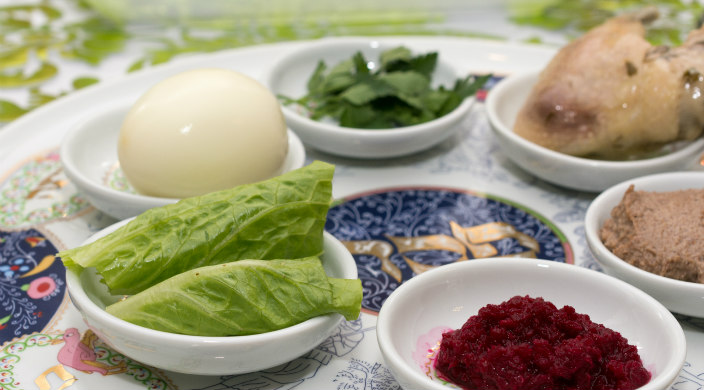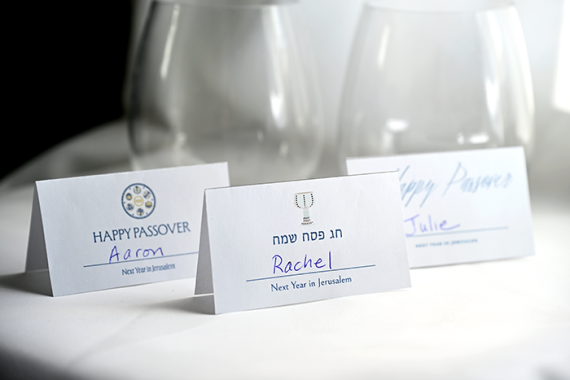Image:


Six Parts of the Seder Plate
The seder plate holds ritual foods used throughout the Passover . Each item on a seder plate is a symbol of the Exodus story and helps participants at the seder retell the story each year. These items are:
- : The roasted egg is symbolic of the festival sacrifice made in biblical times. It is also a symbol of spring - the season in which Passover is always celebrated.
- : Lettuce is often used in addition to the maror as a bitter herb. The authorities are divided on the requirement of chazeret, so not all communities use it. Since the commandment (in Numbers 9:11) to eat the paschal lamb "with unleavened bread and bitter herbs" uses the plural ("bitter herbs") most seder plates have a place for chazeret.
- Zeroa: The shank bone is symbolic of the Paschal lamb offered as the Passover sacrifice in biblical times. Some communities use a chicken neck as a substitute. Vegetarian households may use beets.
- : This mixture (often apple, nuts, and spices ground together and mixed with wine) are symbolic of the mortar used by Hebrew slaves to build Egyptian structures. There are several variations in the recipe for charoset; the describes a mixture of fruits, nuts, and vinegar.
- : Parsley is dipped into salt water during the seder. The salt water serves as a reminder of the tears shed during Egyptian slavery. The dipping of a vegetable as an appetizer is said to reflect the influence of Greek culture.
- : Bitter Herbs (usually horseradish) symbolize the bitterness of Egyptian slavery. The maror is often dipped in charoset to reduce its sharpness. Maror is used in the seder because of the commandment (in Numbers 9:11) to eat the paschal lamb "with unleavened bread and bitter herbs".
- Optional social justice additions: Passover offers a variety of opportunities to infuse our holiday celebrations with social justice themes, including a number of modern additions to consider adding to your seder plate. See "7 Modern Additions to the Seder Plate" to learn more.

